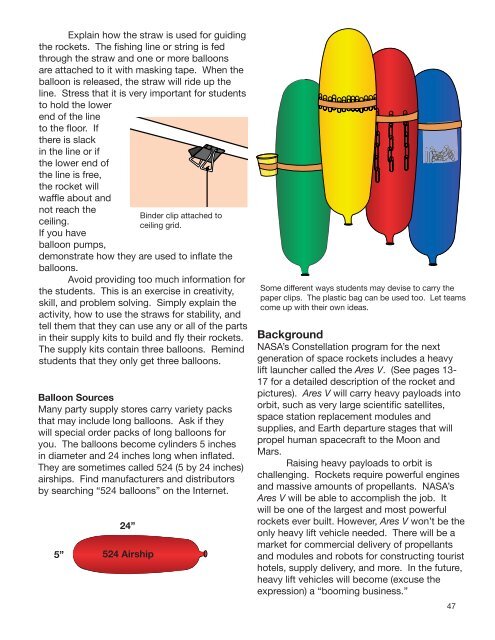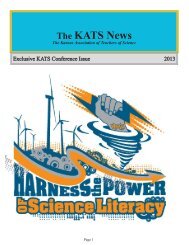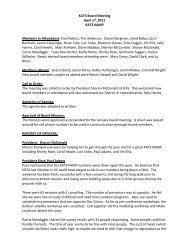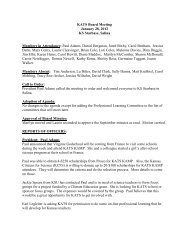Create successful ePaper yourself
Turn your PDF publications into a flip-book with our unique Google optimized e-Paper software.
Explain how the straw is used for guiding<br />
the <strong>rocket</strong>s. The fishing line or string is fed<br />
through the straw and one or more balloons<br />
are attached to it with masking tape. When the<br />
balloon is released, the straw will ride up the<br />
line. Stress that it is very important for students<br />
to hold the lower<br />
end of the line<br />
to the floor. If<br />
there is slack<br />
in the line or if<br />
the lower end of<br />
the line is free,<br />
the <strong>rocket</strong> will<br />
waffle about and<br />
not reach the<br />
ceiling.<br />
If you have<br />
balloon pumps,<br />
Binder clip attached to<br />
ceiling grid.<br />
demonstrate how they are used to inflate the<br />
balloons.<br />
Avoid providing too much information for<br />
the students. This is an exercise in creativity,<br />
skill, and problem solving. Simply explain the<br />
activity, how to use the straws for stability, and<br />
tell them that they can use any or all of the parts<br />
in their supply kits to build and fly their <strong>rocket</strong>s.<br />
The supply kits contain three balloons. Remind<br />
students that they only get three balloons.<br />
Balloon Sources<br />
Many party supply stores carry variety packs<br />
that may include long balloons. Ask if they<br />
will special order packs of long balloons for<br />
you. The balloons become cylinders 5 inches<br />
in diameter and 24 inches long when inflated.<br />
They are sometimes called 524 (5 by 24 inches)<br />
airships. Find manufacturers and distributors<br />
by searching “524 balloons” on the Internet.<br />
5”<br />
24”<br />
524 Airship<br />
Some different ways students may devise to carry the<br />
paper clips. The plastic bag can be used too. Let teams<br />
come up with their own ideas.<br />
Background<br />
NASA’s Constellation program for the next<br />
generation of space <strong>rocket</strong>s includes a heavy<br />
lift launcher called the Ares V. (See pages 13-<br />
17 for a detailed description of the <strong>rocket</strong> and<br />
pictures). Ares V will carry heavy payloads into<br />
orbit, such as very large scientific satellites,<br />
space station replacement modules and<br />
supplies, and Earth departure stages that will<br />
propel human spacecraft to the Moon and<br />
Mars.<br />
Raising heavy payloads to orbit is<br />
challenging. Rockets require powerful engines<br />
and massive amounts of propellants. NASA’s<br />
Ares V will be able to accomplish the job. It<br />
will be one of the largest and most powerful<br />
<strong>rocket</strong>s ever built. However, Ares V won’t be the<br />
only heavy lift vehicle needed. There will be a<br />
market for commercial delivery of propellants<br />
and modules and robots for constructing tourist<br />
hotels, supply delivery, and more. In the future,<br />
heavy lift vehicles will become (excuse the<br />
expression) a “booming business.”<br />
47










